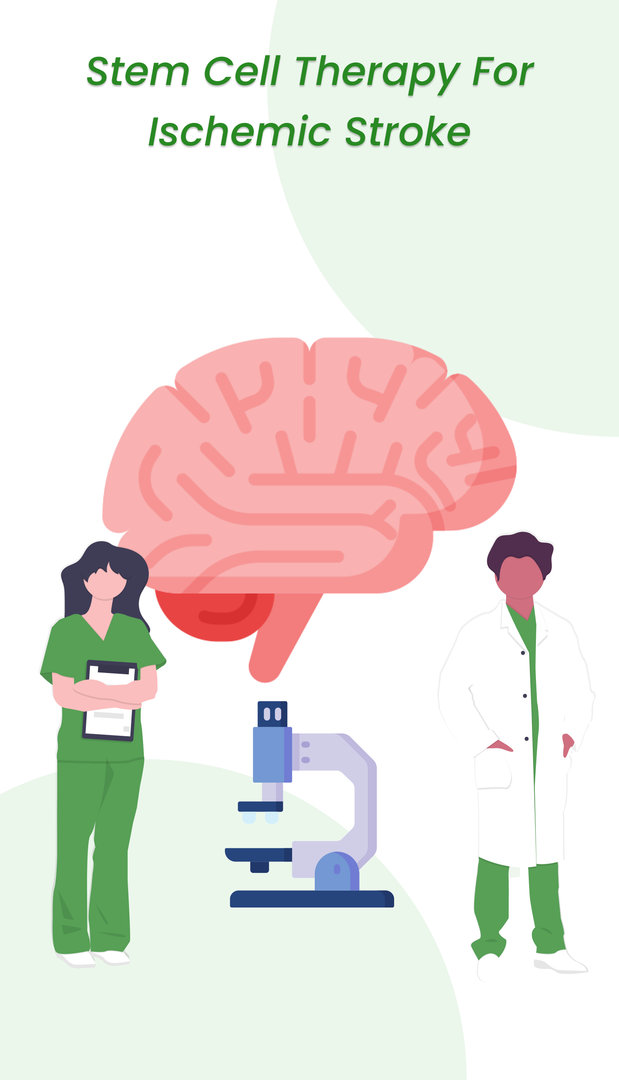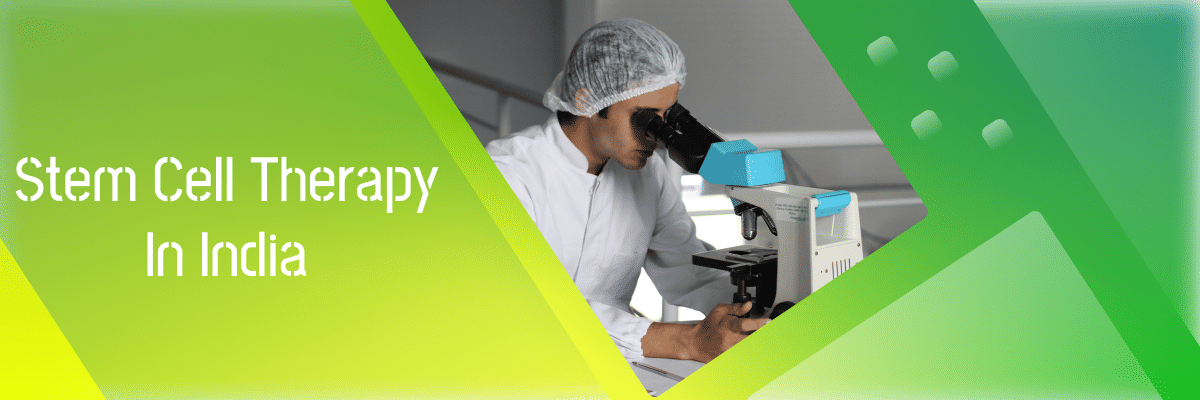Overview
Stroke remains a significant health challenge, affecting over 15 million people globally each year. Of these, approximately 5 million die, and another 5 million are left permanently disabled. Stem Cell Therapy for Stroke is an exciting new treatment that uses special cells to repair brain damage caused by strokes. Recent studies show that 70% of patients experience improved movement and cognitive functions after this therapy.
Dr. Pradeep Mahajan, a specialist at StemRx Bioscience Solutions, emphasizes the transformative potential of stem cell therapy in stroke recovery. He states, "Stem cell therapy offers new hope, promoting better recovery and enhancing the quality of life for stroke survivors." Dr. Mahajan's insights highlight ongoing advancements in neurological treatments, providing a promising path to recovery for stroke patients.
So, what is a stroke? It is a cerebrovascular disease. In simple terms, it is a disease that occurs when something goes wrong with the blood supply in your brain.

Its main types are:
| Type of Stroke | Description |
|---|---|
| Ischemic Stroke | It occurs when a blood clot blocks an artery to the brain, cutting off blood and oxygen, leading to the death of brain cells. |
| Hemorrhagic Stroke | It is caused by the rupture or leaking of a blood vessel in the brain, leading to bleeding in or around the brain tissue. |
| Transient Ischemic Attack (TIA) | A temporary blockage of blood flow to the brain often called a 'mini-stroke,' which causes short-lived stroke-like symptoms but no permanent damage. |

A stroke is usually caused by hypertension or a blocked artery. A patient may display several symptoms, but we can use the acronym ‘FAST’ to note the most common symptoms.
The acronym sounds interesting, isn’t it?
Let’s check out what it actually means.

| Symptom | Description |
| Face Drooping | One side of the face droops. |
| Arm Weakness | When the patient tries to raise both arms, one arm falls back down. |
| Speech Difficulty | The patient will exhibit slurred speech. |
| Time to Act | If the patient displays any of the symptoms, they need immediate medical attention. |
A loss of balance and blurred vision are also common complaints.
Depending on the type of stroke, some or all of the below tests are required to diagnose it.
Prioritize your well-being—don't ignore stroke symptoms; schedule your appointment now, as time is crucial, and your proactive steps could be life-saving.

- Physical Examination
- Blood Tests: to check for certain clotting factors.
- CT Scan: to look for bleeds or reduced blood supply in the brain.
- MRI Scan
- Carotid Ultrasound: to check for any blockages
- Cerebral Angiogram
- Echocardiogram
So, are you diagnosed with a stroke?
Do not worry! Stem cell therapy is the answer to your problem!
Are you now wondering what is stem cell therapy and how does it work for stroke?
Relax! We understand that right now you might be having a lot of questions about stem cell therapy, especially regarding stem cell therapy for stroke recovery.
And so, to answer your questions and make your life easier, we’ve explained everything about stem cell therapy for stroke below.
Stem Cell Therapy for Stroke Recovery

Stem cell therapy involves using unspecialized cells to repair and replace damaged tissue. For stroke treatment, mesenchymal stem cells, typically found in the patient's bone marrow, are extracted from the hip bone and prepared in a lab. These cells are then implanted back into the body through intravenous infusion, lumbar puncture, or direct injection into the brain. The stem cells travel to the stroke-damaged brain area, promoting the formation of new nerve cells and blood vessels, leading to noticeable improvements in disabilities caused by the stroke.
Your well-being is our priority. Call us today to book your Stem Cell Therapy appointment.
Can stem cell therapy help stroke victims?

Yes, stem cell therapy can help stroke victims. Though still in clinical trials, it has shown significant improvements. For instance, a Stanford University study reported a wheelchair-bound patient walking again after therapy.
- Eligibility for Stem Cell Therapy
Eligibility varies by clinical trial, but early treatment after a stroke yields better results. Those who had a stroke long ago might not qualify.
- Procedure
Stem cell therapy is minimally invasive, using the patient’s cells, which reduces the risk of immune reactions and has no major long-term side effects. It is considered a natural and long-lasting treatment.
- Success Rate
Clinical trials report a 60-80% success rate, with most patients gaining more independent movement within six months. However, this treatment is not yet FDA-approved.
Stem Cell Therapy for Hemorrhagic Stroke

A hemorrhagic stroke occurs when a blood vessel bursts in the brain. It normally causes paralysis, loss of speech, and other disabilities. It usually occurs in younger adults around the age of forty. There have been a smaller number of clinical trials when compared to ischemic stroke.
Nonetheless, all these trials have shown promising results. The most important criterion for good results seems to be getting treatment as soon as possible after the stroke.
Studies show that patients have better recovery from symptoms with stem cell treatment as compared to those who have undergone a traditional hematoma removal surgery.
Take charge of your health with Stem Cell Therapy for Hemorrhagic Stroke. Contact us today and start your journey to recovery.
Stem Cell Therapy for Ischemic Stroke

Ischemic stroke is when blood supply to one part of the brain is reduced or stops completely. It occurs in older individuals, generally after the age of fifty. The damaged part of the brain can be divided into two regions—the ischemic core and the penumbra.
The ischemic core is usually too damaged to be treated by the time it is diagnosed. The main goal of stem cell treatment for ischemic stroke is to reverse the injury in the penumbra area to alleviate disabilities.
The correct time to undergo a stem cell transplant for stroke is within the first seven days. The penumbra during this period is still small, giving the best results.
Clinical studies of stem cells for stroke patients so far have shown up to 60% improvement. CT scans have also exhibited a quantitative reduction in the area of the penumbra.
Long-Term Benefits Stroke Patients May Experience With Stem Cell Therapy
- Improved Mobility: Over time, stem cell therapy can help restore movement and coordination in stroke patients by regenerating damaged brain cells. Patients may regain the ability to walk, perform daily activities, and improve their overall balance and strength.
- Cognitive Recovery: Patients can experience improvements in memory, concentration, and problem-solving skills as the therapy aids in the repair of brain functions affected by the stroke.
- Reduced Disability: Stem cells can reduce the severity of disabilities by promoting neural repair, enhancing motor function, and improving speech abilities over time.
- Lower Risk of Complications: The therapy helps reduce risks associated with long-term complications such as paralysis, spasticity, and depression, often leading to a better quality of life.
- Sustained Benefits: Unlike traditional therapies, stem cell therapy offers the potential for ongoing improvement, with some patients reporting continuous gains even years after the treatment.
Ongoing Research in Stem Cell Therapy For Stroke Recovery
- Neural Regeneration: Current clinical trials are exploring how stem cells, especially neural stem cells, can repair and regenerate brain cells damaged by stroke, improving motor and cognitive functions.
- Combination Therapies: Some studies are investigating the effectiveness of combining stem cell therapy with physical rehabilitation or drugs to enhance recovery outcomes.
- Different Stem Cell Types: Research is focused on various stem cells, including mesenchymal, induced pluripotent (iPSCs), and neural stem cells, to determine which type is most effective for stroke recovery.
- Delivery Methods: Ongoing studies are assessing different methods of delivering stem cells to the brain, such as intravenous (IV) injections or direct delivery to the stroke-affected area, to optimize the effectiveness of the therapy.
- Potential for Chronic Stroke Patients: Trials are now focusing on the long-term impact of stem cell therapy on chronic stroke patients, showing that even those who had a stroke several years ago may still benefit from treatment.
- Results and Future Direction: Initial results from ongoing clinical trials indicate promising improvements in patients’ motor skills, cognitive functions, and quality of life.
Stem Cell Therapy for Stroke Cost
Is stem cell stroke treatment expensive?
We know you are curious to know this, but let us first understand the factors that affect the cost of this treatment.
Some of them are:
- The severity of the stroke
- The number of cycles required
- The type of facility selected for treatment
- Medical history of the patient
- Post-treatment care, if required
Since stem cell transplant for stroke is still undergoing clinical trials, it is unfortunately not covered by medical insurance. However, stem cell therapy for stroke in India is available at a fraction of the cost of other countries.
Stem cell therapy for stroke cost in India is 6700 to 13,400 USD, with each cycle costing about 2000 USD. Stem cell for stroke is also conducted in other countries like the USA, Australia, and Spain.
Embark on your path to recovery. Reach out to us today for information on the cost of Stem Cell Therapy for Stroke. Take the first step towards a healthier future.
Let us check out what the cost in those countries is.

| COUNTRY | COST IN USD |
| India | 6000 to 13,400 |
| USA | 15,000 to 105,000 |
| Spain | 10,200 to 30,600 |
| Australia | 30,000 to 60,000 |
Stem Cell Therapy for Stroke Clinical Trials

One of the most recent clinical trials has been conducted by the All India Institute of Medical Sciences, New Delhi. This study underscores the importance of a multifactorial approach to the treatment of stroke patients.
This is an important study that pushes for the introduction of stem cell therapy as a part of the regular treatment protocol in the treatment of stroke patients. It also asks for more widespread trials of stem cell therapy for stroke patients to get a better idea of the results.
In the US, three researchers at the Mayo Clinic at Stanford University were given a grant of 31 million USD in 2021 to continue their clinical trials of stem cell treatment for stroke patients. This underlines just how promising stem cell therapy is for stroke patients.
Where Can I Get Stem Cell Therapy for Stroke?
There aren’t many countries that offer clinical trials of stem cell therapy for stroke. Most of these countries also have strict rules for medical visas, putting them out of reach for a majority of the patients.
Some of the more popular countries are:
- India
- USA
- UK
- Spain
India is very popular for stem cell research globally. Stem cell research institutes have invested over a decade in clinical trials. They have produced excellent results and have now created a finely-tuned protocol that ensures a high success rate.
Facilities that offer stem cell treatment for stroke patients are highly regulated. Most of them now have a success rate of 70 to 80%. This is much higher than the global average of about 60%.
Why should you choose India for your treatment?
If all of the above reasons are not enough to convince you, let us add a few more reasons to help you make your mind up.

So, what are you thinking?
Reference:






